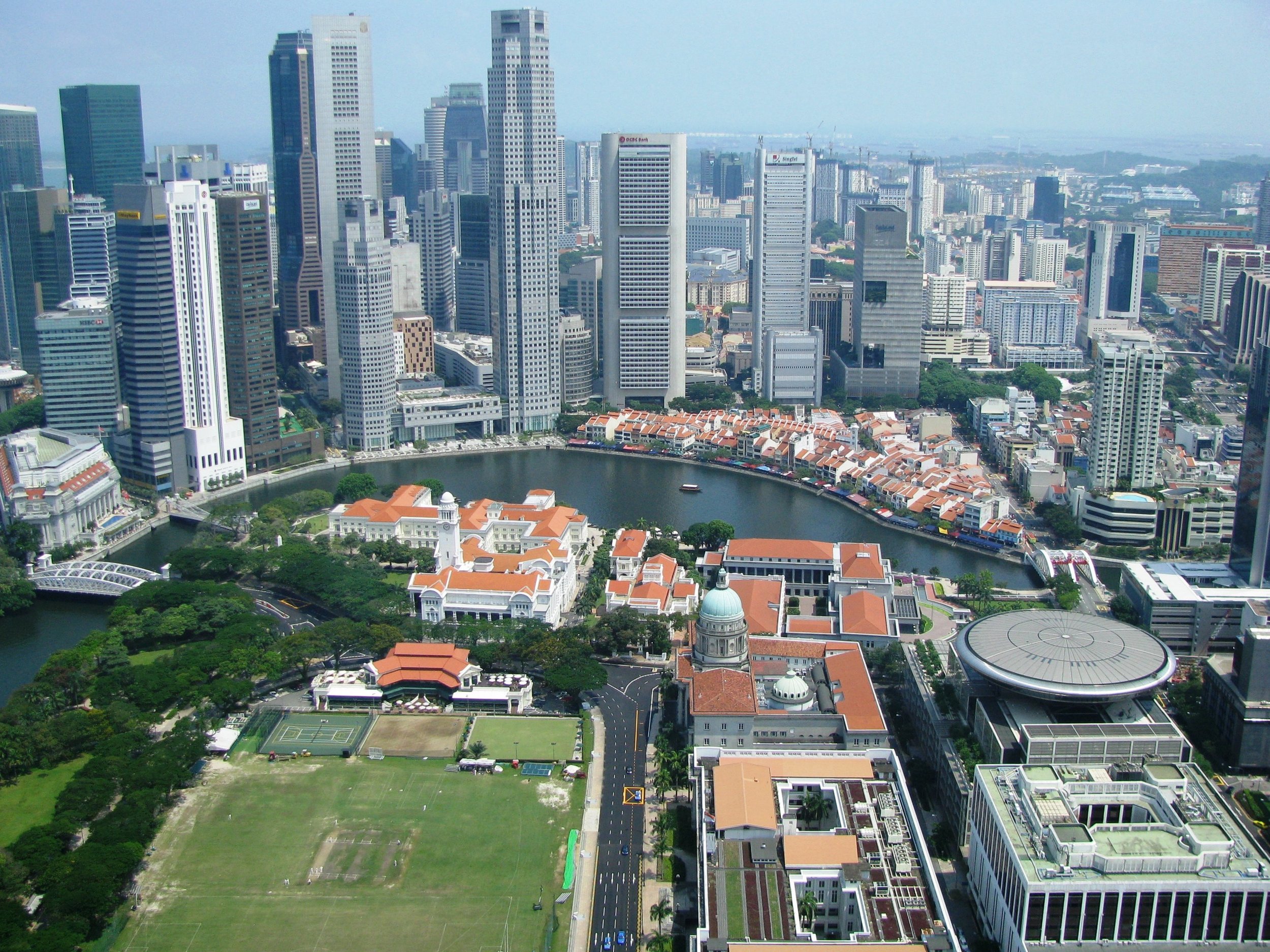The More, the Merrier?
 It’s not hard to imagine Singapore these days, if you’re a foreigner. Skyscrapers? Check. Cosmopolitan lifestyle? Check. No gum? Check and check again. Of course, this isn’t quite the full picture at all; in fact, it’s rather off the mark when it comes to gum!
It’s not hard to imagine Singapore these days, if you’re a foreigner. Skyscrapers? Check. Cosmopolitan lifestyle? Check. No gum? Check and check again. Of course, this isn’t quite the full picture at all; in fact, it’s rather off the mark when it comes to gum!
The point I’m really driving at, though, is that people, in imagining Singapore, don’t immediately realize how different things could have been. What it is now – a bustling, busy city-state slightly smaller in area than New York City – is far removed from its decidedly sparse beginnings. Where we start, then, is by looking at what’s most obviously changed between then and now; and that answer, in a word, is people.
The explosion of Singapore’s population in the last half-century is indispensable to any analysis of its rise to regional (and, in some aspects, global) prominence. Today, Singapore contains within its borders slightly more than 5.3 million people, from 1.89 million in 1965. Its land area, by contrast, grew by 23% in the same period.
Singaporeans were, generally speaking, not much amused by these numbers. These numbers and other figures were part of a white paper presented by the Singapore government in January that has sparked unprecedented levels of debate on Singapore’s future. Singapore’s leaders have scrambled to protect the white paper’s targets – indeed, they have scrambled to deny that the figures constitute targets at all – but that has not quelled the mounting anger of many Singaporeans seething at the notion that Singapore could be home to 6.9 million people by the year 2030.
Now, as a Singaporean myself, I would hardly fancy living in a country as crowded as that. But I recognize, at the same time, that the Singapore government has a job to do. That job is to maintain economic growth while keeping people happy, and it’s unimaginably difficult. Countries everywhere struggle with similar troubles. What raises eyebrows (and angry demonstrations), though, is ultimately not the final goal, which arouses initial debate but then gets lost in the mist of the long term; it is the methods employed by successive governments to reach that goal.
And currently, the methods listed in the white paper reveal a dilemma that lies at the heart of the dissatisfaction within all peoples that are fed the mantra of demographic growth. That dilemma is immigration, foreigners, the undesired, the unneeded. Economic growth keeps it festering under the skin of society, but when it can bear it no longer – when the government comes out and says,
“If we do too little to address the demographic challenge [by not encouraging immigration], we risk becoming a steadily greying society, losing vitality and verve, with our young people leaving for opportunities elsewhere,”
it explodes.
It doesn’t matter, sadly, that the rest of the white paper’s conclusion talks about finding a “judicious balance,” and recognizes the social instability latent in any decision to flood the country with foreigners who understand or care little (this is assumed, and unfortunately correct a lot of the time) about the Singaporean way of life. Instead, people will fasten on to the figures and arguments that best suit its reactionary cause, and pitch them with a stubbornness matched only in intensity by the Singapore government’s implicit and consistent refusal to abandon its twin goals of demographic and economic growth, in spite of the very reasonable questions that merit a renewed examination of this longtime policy.
What Singapore is dealing with now is really happening everywhere, in myriad shapes and forms. It is a zero-sum game of demographic musical chairs; in the crudest of terms spoken by the most reactionary among us, it is Mexicans going to America, Eastern Europeans going to Western Europe, and Chinese and Indian people going everywhere. It is 7 billion people on this planet and counting (lest we forget the debate that sparked) – and it is generating plenty of questions, but desperately few solutions.
